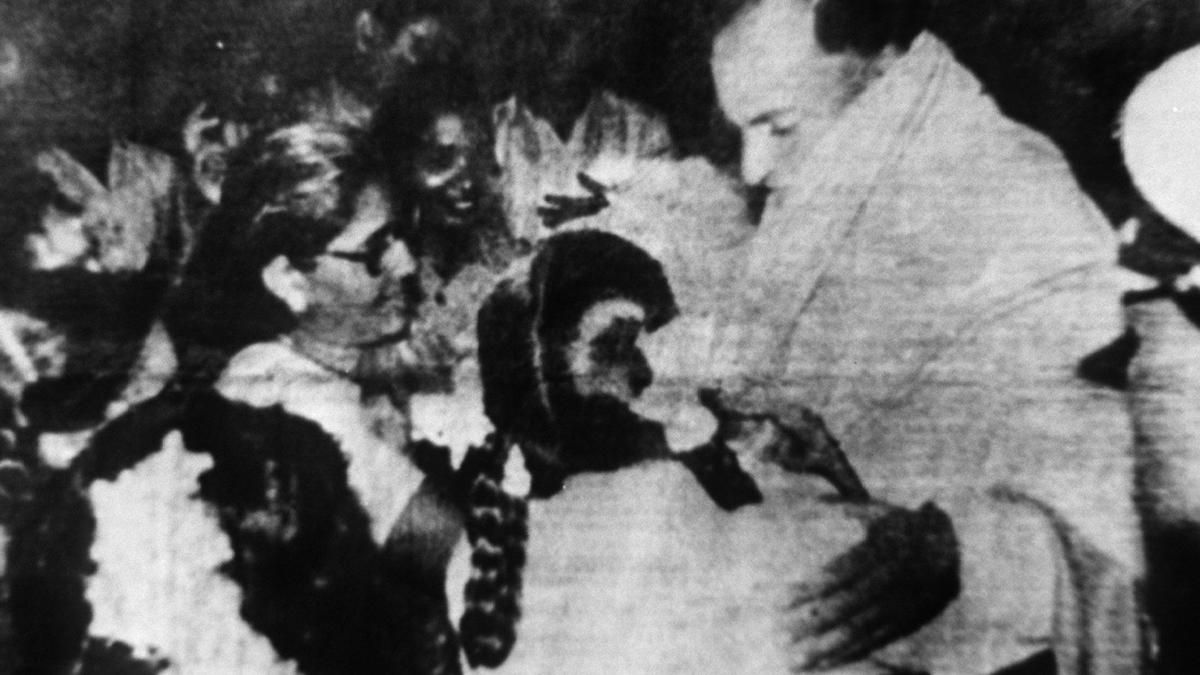On May 21, 1991, a bespectacled girl in an orange and green churidar bent down respectfully to touch Rajiv Gandhi’s feet after he addressed an election rally in Sriperumbudur in India’s Tamil Nadu. It was then that she set off a concealed explosive device that was strapped to her body.
What followed was chaos and death; Gandhi, then aged 46, was killed along with 18 others, including the girl — later identified as Dhanu. This moment remains a black day in the history of Independent India.
It also set off a massive nationwide investigation for the conspirators — which has now been converted into a seven-episode serial on SonyLiv, titled The Hunt – The Rajiv Gandhi Assassination Case, directed by Nagesh Kukunoor.
The gripping show, ( read our review ) gives us a ringside view of the CBI investigation and a closer look at those involved in the assassination, including the Liberation Tigers of Tamil Eelam operatives led by Sivarasan.
But who exactly was Sivarasan? How did he plan the death of Rajiv Gandhi? And what happened to him after it? We have the answers.
Meet one-eyed Sivarasan
The man believed to have devised the Rajiv Gandhi assassination plan was Chandrasekharampillai Packiachandran, also known as Sivarasan. Born in 1858, in Udupiddy, a town about 32 km from Sri Lanka’s Jaffna City, he had a normal childhood. Sivarasan’s father inculcated in him strong nationalist feelings at a young age.
When his father died in late 1977, Sivarasan, being the eldest child, had to bear the family burden and drop out of school and begin supporting the family — he had three brothers and two sisters. It was around this time, that Sivarasan began showing signs of disenchantment with the Sri Lankan government. In fact, during this period, he was arrested on multiple occasions for displaying strong pro-Tamil Eelam views.
Around 1983, he joined the Tamil Eelam Liberation Organisation (Telo), a militant group. But in the subsequent years, he joined the LTTE . During his time in the LTTE, he was injured in a clash with the Sri Lankan armed forces near the Jaffna Fort and he lost his left eye. Soon after, his fellow LTTE colleagues started calling him “Ottaraikkannan” or “one-eyed person”.
Following the release of the 1961 Marlon Brando Hollywood film, Sivarasan became known as ‘one-eyed Jack’.
Planning the assassination of Rajiv Gandhi
As years rolled by, Sivarasan was promoted as captain in the LTTE and entrusted with specific assignments to be undertaken clandestinely in India. In 1990, he was tasked with the assassination of Kanthasamy Padmanabha alias Naabhaa aka Ranjan, who was the Secretary–General of the pro-India Eelam Peoples Revolutionary Liberation Front.
The success of this mission led LTTE chief Prabhakaran to assign him with his next target — Rajiv Gandhi. Unlike the Padmanabha assassination where firearms and grenades were used, another new method was to be used to kill Rajiv Gandhi.
The entire responsibility of the mission was handed over to Sivarasan and he hatched the plan which saw him recruiting several other LTTE operatives such as Murugan, Ravichandran, Santhan and even Nalini.
On the day of the assassination, Sivarasan, dressed as a journalist, reached the location of Rajiv Gandhi’s rally and hid himself in the crowds. As Rajiv Gandhi walked to the crowds, it was Sivarasan who guided him towards Dhanu, who, in turn, garlanded Gandhi and then bent as if to touch his feet. She flicked a switch, resulting in half a kilo of plastic explosives in her suicide vest exploding, killing Rajiv Gandhi and others.
The hunt for Sivarasan and his death
In the ruckus caused following the explosion, Sivarasan and his other conspirators fled the scene. However, what they didn’t realise was that another photographer present at the rally had inadvertently taken photos of them.
This led to a manhunt for Sivarasan, which ended up in the Bangalore suburb of Konanakunte in the state of Karnataka. In his book Ninety Days: The True Story of the Hunt for Rajiv Gandhi’s Assassins, journalist-author Anirudhya Mitra writes, “When he [Sivarasan] found that the police had surrounded his hideout in Konanakunte, he didn’t immediately die by suicide. He knew the agencies would like to catch him alive, and yet he waited thirty-six hours for them to finally break into his hideout. It’s only then that he shot himself through his temple. He was cunning, ruthless, brutal and devoted to his Tamil cause.”
And when the authorities finally broke into Sivarasan’s hideout, they found six of his comrades dead inside. They had all bitten into the capsule of cyanide that they wore around their neck.
What is most ironic is that Sivarasan died on August 20 — the same day that Rajiv Gandhi was born. Also, the Indian Express reports that the residence in Konanakunte where Sivarasan and the other LTTE members stayed was converted into a police station and later the landlord rented it out to a school.
With inputs from agencies


)

)
)
)
)
)
)
)
)



